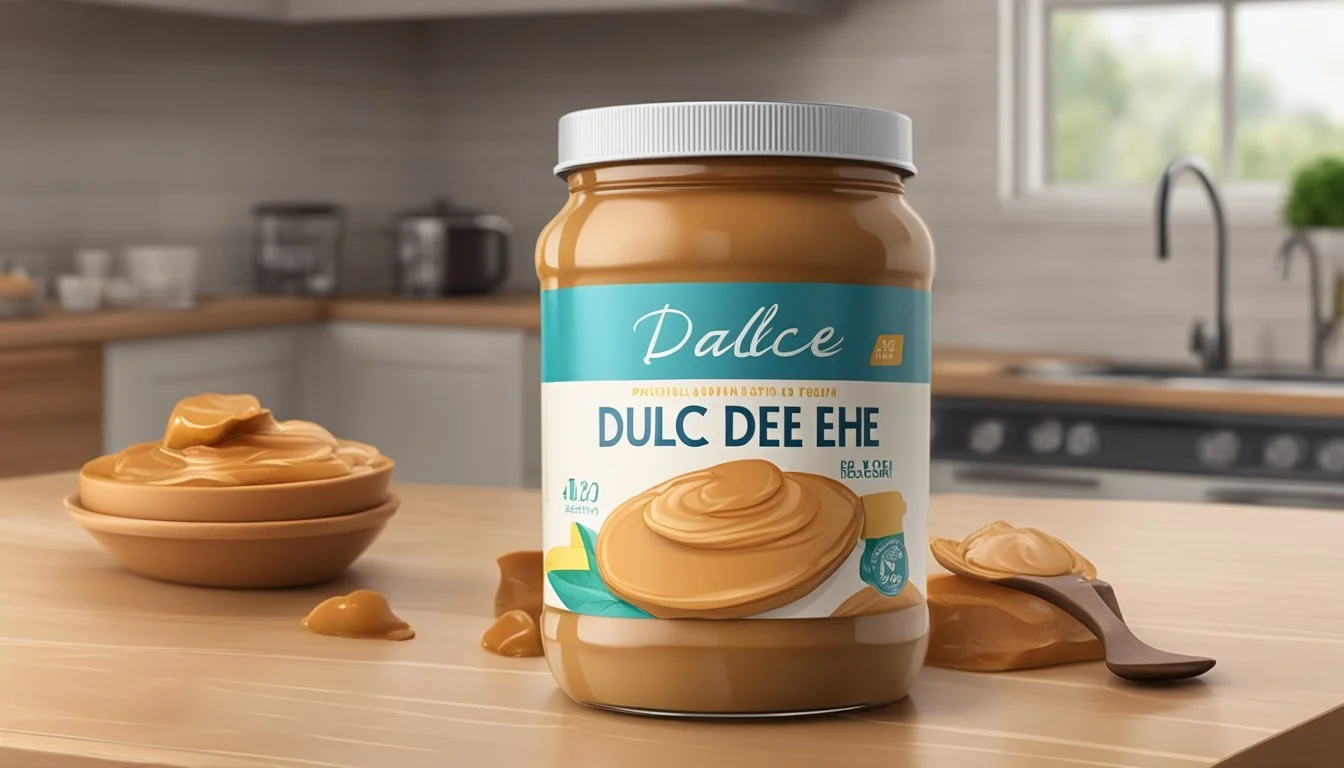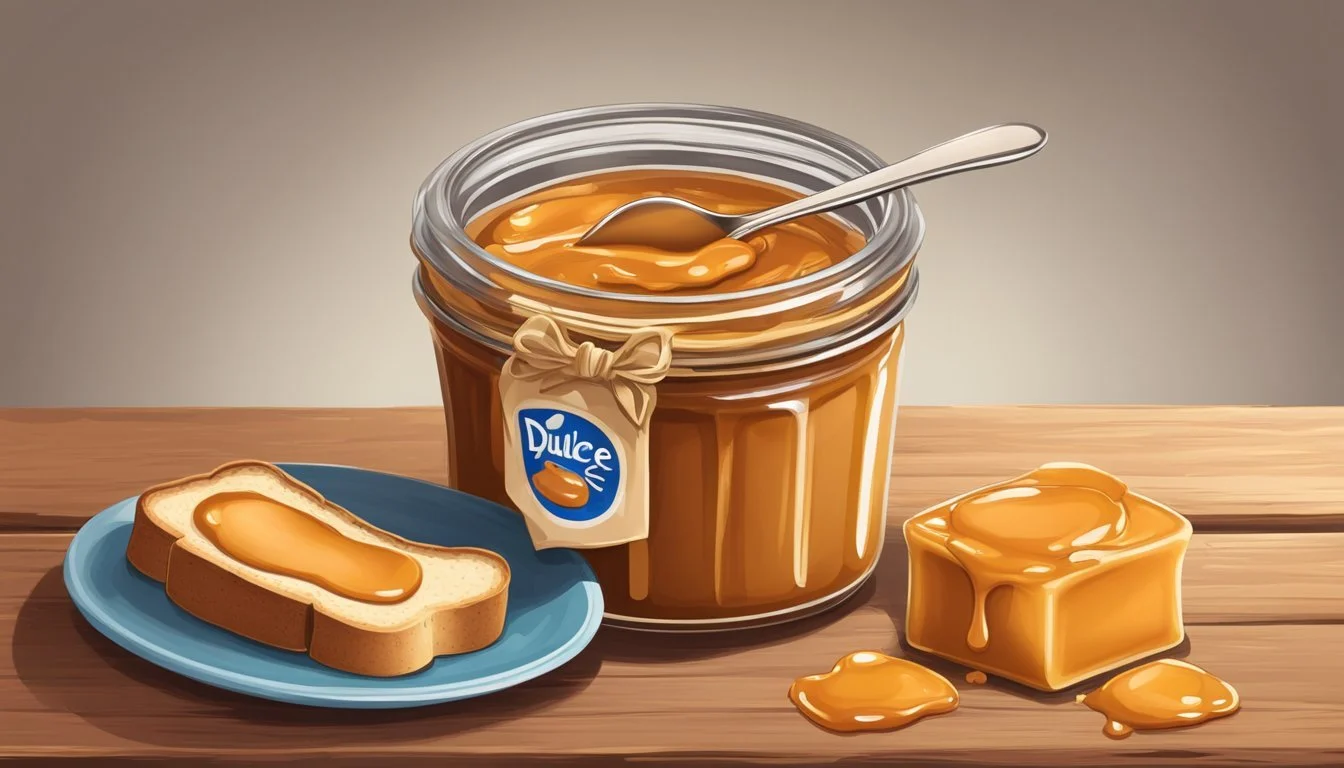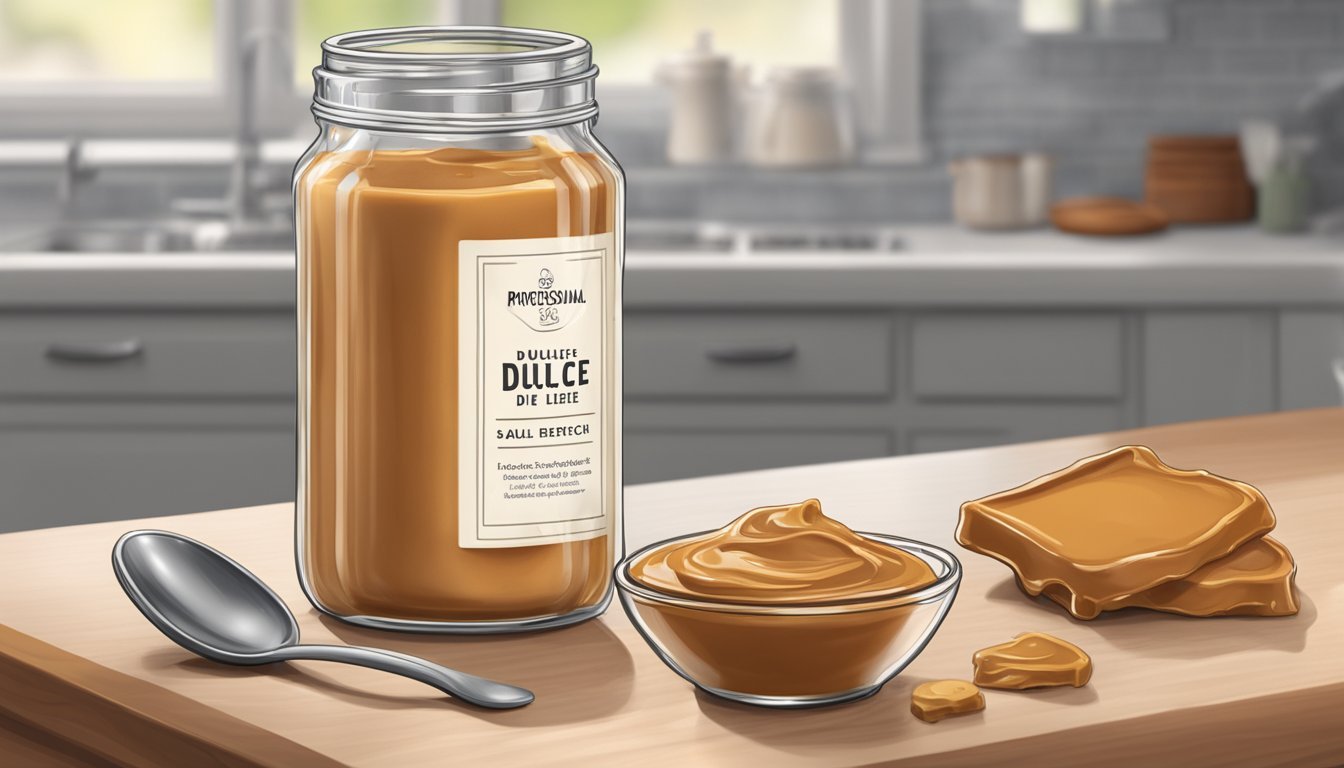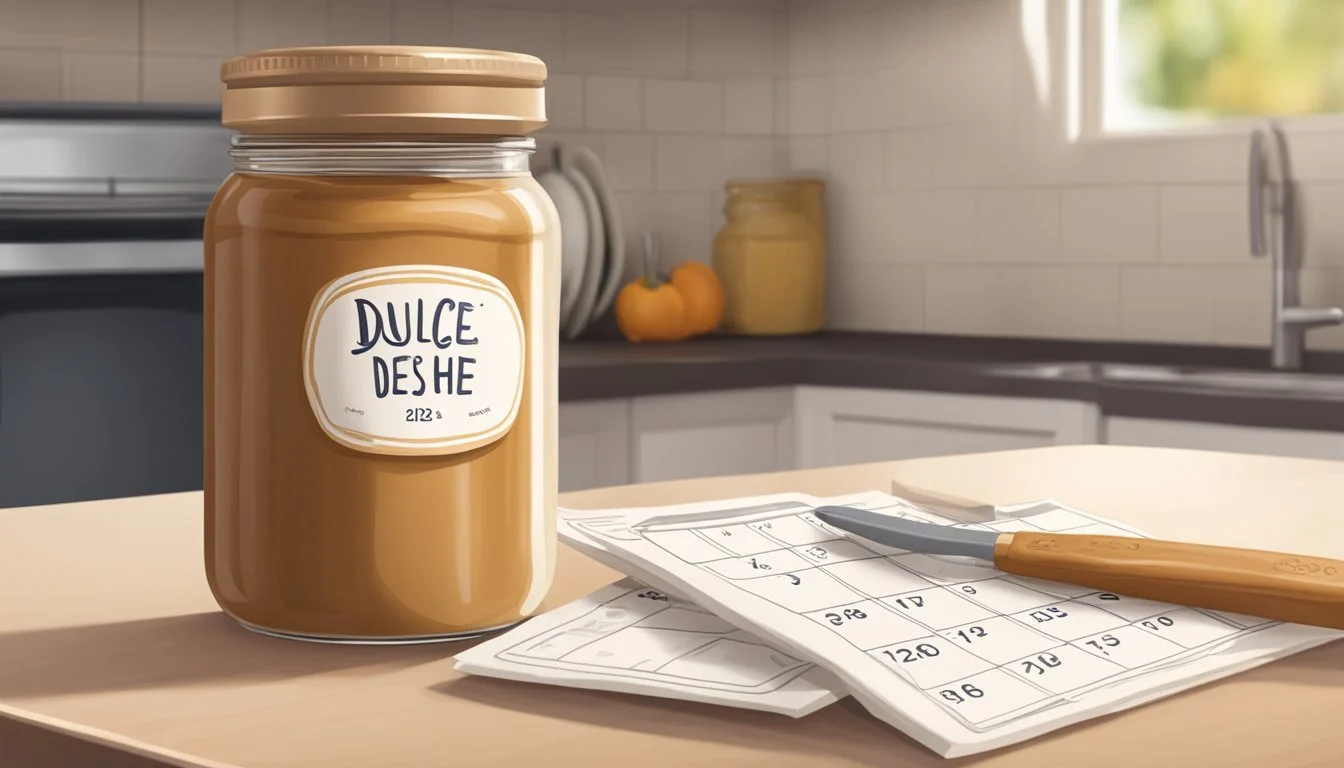Does Dulce de Leche Go Bad?
Shelf Life and Spoilage Signs
Dulce de leche, a sweet confection originating from Latin America, is a popular ingredient in desserts and sweet treats. It is made by slowly heating sweetened milk, which results in a product with a rich, caramel-like flavor. While it boasts a considerable shelf life thanks to the sugar content which acts as a preservative, dulce de leche is not immune to spoilage.
When unopened and stored at room temperature, dulce de leche can last between one to three months. Once the seal is broken, however, its exposure to air can accelerate the spoilage process due to chemical reactions. At this point, refrigeration becomes necessary to preserve its quality. In the refrigerator, an open container of dulce de leche can last up to two weeks.
For those needing to store dulce de leche over an extended period, freezing is an option. Properly sealed, dulce de leche can be stored in the freezer, significantly extending its edibility beyond the typical shelf life. The longevity of dulce de leche, whether it has been opened or remains sealed, depends on following correct storage methods to maintain its sweetness and prevent spoilage.
What Is Dulce de Leche?
Dulce de leche is a creamy caramel-like sauce highly cherished in Latin American cuisine, known for its rich flavor and smooth texture. It is a versatile sweet treat that can be used in various desserts or simply enjoyed on its own.
Origins and Cultural Significance
Dulce de leche is a traditional confection from Latin America, with strong roots particularly in Argentina, Uruguay, and Brazil. It is an integral part of the cultural cuisine and often sparks a friendly rivalry between countries over the best method of preparation.
Ingredients and Preparation
Primarily, dulce de leche is made by simmering sweetened milk until it reaches a thick and creamy consistency. The simmering process gradually caramelizes the sugars, creating the characteristic flavor and color. Ingredients typically include cow's milk, sugar, and sometimes vanilla for flavoring.
Commercial Varieties and Homemade Differences
Commercial varieties, like La Lechera, are widely available and come in canned forms, offering convenience but often differing from homemade versions. Homemade dulce de leche, prized for its freshness, may have slight variations in flavor and texture based on the cook's preference.
Culinary Uses
Dulce de leche is highly versatile in the kitchen. It's used as a spread on toast or pancakes, a filling for cakes and pastries, or a topping for ice cream and pies. It’s also a crucial element in classic desserts like alfajores and flan.
Flavor and Texture Profile
Dulce de leche boasts a rich caramel flavor that's both sweet and complex. Its smooth, creamy texture is thicker than caramel sauce but not as dense as fudge, striking a delightful balance that enhances its use in various desserts.
Nutritional Overview
Dulce de leche is high in calories and sugars, as its primary ingredients are sweetened condensed milk and sugar. It should be consumed in moderation, keeping in mind its rich and sweet properties.
Shelf Life and Quality Indicators
Unopened store-bought dulce de leche can last months, with an expiration date typically indicated on the label. After opening, the color begins to darken as it ages, and it should be stored in the fridge. Homemade dulce de leche generally has a shorter shelf life and should be refrigerated and consumed more quickly to maintain its quality.
Proper Storage Techniques
Proper storage of dulce de leche is essential for maintaining its quality, preventing spoilage, and extending shelf life. Factors such as temperature, container type, and environment play significant roles in the storage process.
Storing Unopened Dulce de Leche
Unopened cans of dulce de leche should be stored in a cool, dry place such as a pantry or kitchen cupboard. This environment helps to maintain the product’s quality for 1 to 3 months. It is important to ensure that the unopened can is not exposed to extreme temperatures or direct sunlight.
Storing Opened Dulce de Leche
Once opened, dulce de leche needs to be transferred to an airtight container. These containers can range from mason jars to specialized airtight containers designed for refrigerated storage. The opened dulce de leche should then be refrigerated to slow down bacterial growth, allowing it to remain in good condition for up to two weeks.
Freezing Dulce de Leche
For longer storage, dulce de leche can be frozen. To freeze, it’s imperative to use an airtight container or heavy-duty freezer bags to prevent freezer burn. This method can extend the storage life of dulce de leche, making it last for several months. It is recommended to thaw frozen dulce de leche in the refrigerator prior to usage.
Spotting Spoilage
When it comes to dulce de leche, understanding spoilage signs is essential for maintaining its quality and enjoying its rich flavor safely. The shelf life can be impacted by factors such as storage conditions and exposure to heat sources.
Visual and Textural Changes
Color: Fresh dulce de leche has a uniform caramel hue. Spoilage is often indicated by a change in color, with the mixture turning darker or developing dark spots.
Texture: It should have a smooth, consistent texture. The presence of lumps or a separation of ingredients can signal spoilage.
How to Detect Off Flavors
One should refrigerate dulce de leche after opening to preserve its flavor. To detect off flavors, a small taste test can reveal any sourness or unusual taste profiles, which are clear indicators that the dulce de leche has gone bad. Utensils used for tasting must be clean to avoid contamination.
Importance of Hygiene in Storage
Proper storage in an airtight container is key to preventing spoilage. Dulce de leche should be sealed away from air and kept away from heat sources to maintain its quality. Always use clean utensils when handling dulce de leche to minimize the risk of introducing contaminants.
Guidelines for Using Dulce de Leche
Dulce de leche, a rich caramel-like sauce, is a versatile ingredient beloved for its creamy texture and deep flavor profile. This sweet treat made from slowly simmering sweetened condensed milk until transformative caramelization occurs, offers a unique taste ideal for a variety of culinary applications.
Incorporating into Recipes
In baking, dulce de leche acts as a superb filling or topping for cakes and other desserts. Its thick consistency makes it an exceptional layer between cake tiers or as a swirl in brownie batter. When mixed with baking soda, it can create light, airy textures within sponge cakes, enhancing their moistness.
For Fillings: Allow to cool before spreading to prevent sogginess.
As a Swirl: Gently fold into batters for a marbled effect.
Serving Suggestions
Dulce de leche is not just for baking; it's a delightful spread on toast, pancakes, and waffles. Serving it at room temperature maximizes spreadability and flavor. It can also be a luxurious topping for ice cream, adding a velvety caramel twist to the classic vanilla flavor.
On Toast: Spread a thin layer for a sweet morning treat.
With Ice Cream: Drizzle generously before serving.
Pairing with Other Flavors
The caramel notes of dulce de leche pair well with a variety of flavors. It complements vanilla and butter-rich recipes, and can also enhance chocolate, cinnamon, or nut-based desserts. The key is to balance the richness without overwhelming the taste buds.
Chocolate: Combine with dark chocolate for a balance of sweet and bitter.
Nuts: Top candied nuts with dulce de leche for added texture and flavor.
Frequently Asked Questions
When considering dulce de leche, understanding its makeup and storage is crucial to preserving its quality and enhancing its use in various recipes.
Can You Make Dulce de Leche from Condensed Milk?
Yes, one can make dulce de leche from sweetened condensed milk. This is typically done by slowly heating the condensed milk until it thickens and develops a rich, caramel color and flavor. The process involves careful boiling, often in a water bath, to ensure even cooking and prevent burning.
Is Dulce de Leche the Same as Caramel?
Dulce de leche is similar to caramel but differs in preparation and taste. While caramel is made by heating sugar until it liquefies and browns, dulce de leche is created by simmering milk and sugar, which results in a creamier, milder flavor, distinct from the sharper notes of a caramel sauce.
Does Dulce de Leche Harden Over Time?
Over time, especially when stored improperly, dulce de leche can become harder in texture. But generally, if stored correctly in the refrigerator, it maintains a spreadable consistency for up to two weeks. To keep it from hardening, seal it tightly and store it at consistent temperatures.
Can Dulce de Leche Be Used as a Filling?
Certainly, dulce de leche is an excellent filling for various desserts. It's thick and rich texture makes it ideal for sandwiching between cookies like alfajores or as a layer in cakes. When used as a filling, it should be of a thicker consistency to prevent oozing out from the desserts.
Conclusion
Dulce de leche, a sweet confection, requires proper storage to maintain quality. An unopened can of dulce de leche lasts between one to three months at room temperature. Once opened, refrigeration is advisable to extend its shelf life for up to two weeks. For longer preservation, freezing is an option; it must be sealed correctly to prevent freezer burn and quality degradation.
Storing dulce de leche in the fridge after opening minimizes exposure to air and moisture, factors that accelerate spoilage. Hot or humid climates necessitate refrigeration to preserve the dessert's quality. However, some brands without preservatives may retain freshness at room temperature for several weeks, although this can vary.
Observing the appearance and smell of dulce de leche can serve as indicators of its quality. Any signs of spoilage, such as off odors or discoloration, suggest it should be discarded. In summary, dulce de leche's shelf life and the necessity of refrigeration depend on its sealing, storage conditions, and exposure to the elements. Proper storage ensures the enjoyment of this caramel-like treat at its best quality.
References
The Fork Bite
Article: "Does Dulce de Leche Need to be Refrigerated?"
Key Points:Dulce de leche shelf life is 1-3 months unopened at room temperature.
After opening, refrigerate and use within two weeks.
For long-term storage, freezing is an option.
Amigofoods
Article: "Does Dulce de Leche Go Bad?"
Key Points:Exposure to air after opening speeds up spoiling.
Store in the fridge if not consumed within a couple of days post-opening.
Survival Freedom
Article: "Does Dulce de Leche Need To Be Refrigerated?"
Key Points:Provides a guide on freezing dulce de leche.
Discusses the lasting period of frozen dulce de leche, which is 3-6 months.
Mashed
Article: "The Untold Truth Of Dulce De Leche"
Key Points:Offers a recipe for making dulce de leche.
Details the low-heat cooking process and the use of baking soda.
All resources indicate the need for proper sealing and storage techniques to maximize the freshness and longevity of dulce de leche, whether it is purchased or homemade. They provide guidance on the various stages of dulce de leche's shelf life from unopened at room temperature, after opening, and when frozen.









